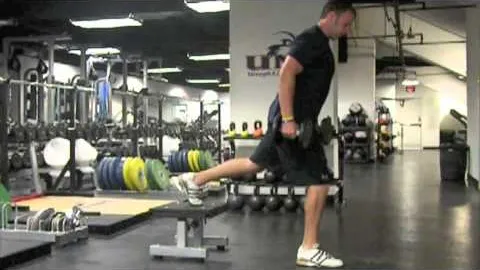
Welcome to our website, where we will be describing the One Leg Squat exercise in detail. The One Leg Squat, also known as the Pistol Squat, is an excellent lower body exercise that targets multiple muscle groups simultaneously. In this article, we will provide a comprehensive guide on how to perform the One Leg Squat correctly, its benefits, variations, and tips for beginners. So, let's dive in!
To perform the One Leg Squat correctly, follow the steps below:
The One Leg Squat offers numerous benefits for both strength training enthusiasts and athletes:
The One Leg Squat is an excellent exercise for building leg strength. It primarily targets your quadriceps, hamstrings, glutes, and calf muscles. By regularly incorporating the One Leg Squat into your workout routine, you can develop stronger legs and increase lower body stability and balance.
Performing the One Leg Squat requires a significant amount of balance and stability. As you balance on one leg throughout the movement, you engage your core muscles and strengthen smaller stabilizing muscles in your lower body. This improved balance and stability can translate into better performance in various sports activities and daily life tasks.
Functional strength refers to the ability to perform everyday tasks and activities with ease and efficiency. The One Leg Squat helps improve functional strength by mimicking movements that we regularly encounter in our daily lives, such as bending down to pick up objects or climbing stairs.
The One Leg Squat requires flexibility in your hip, knee, and ankle joints. By consistently practicing this exercise, you can increase the range of motion in these joints, allowing you to move more freely and perform other exercises more effectively.
Maintaining proper form during the One Leg Squat requires engaging your core muscles throughout the movement. This exercise effectively targets your abdominal muscles, obliques, and lower back muscles, resulting in a strengthened core and improved posture.
Once you have mastered the basic One Leg Squat, you can challenge yourself by trying out the following variations:
If you're new to the One Leg Squat or struggling to maintain balance, you can use a wall, a sturdy object, or a resistance band for assistance. Hold onto the support as you squat down and use it for stability as needed.
To increase the difficulty and intensity of the One Leg Squat, you can add weights. Hold a dumbbell or kettlebell with both hands close to your chest or use a barbell placed on your shoulders. This variation will further engage your muscles and promote strength gains.
Using a box or a bench can help with balance and depth control. Place one foot on the box behind you and lower down into a squat position with the other leg. This variation adds an element of stability and enables you to track your range of motion more precisely.
If you're new to the One Leg Squat, here are a few tips to help you get started:
The One Leg Squat is an effective exercise for building leg strength, improving balance and stability, enhancing functional strength, increasing flexibility, and challenging your core muscles. By following the proper form, gradually progressing, and incorporating variations into your routine, you can reap these benefits and achieve your fitness goals. So, start practicing the One Leg Squat today and enjoy the positive impact it will have on your overall fitness journey!
If you're looking for a gym, fitness club or yoga studio, you've come to the right place.
You can find information about gyms in your area. Browse catalog of gyms and find gyms with classes which are you looking for.
On gym page you can find simple information like address, phone or website. You can find list of available classes. You can check availability of personal training or small group classes. On place page you can also see information about open hours.
You can find gyms near you with amenities, courts, studios and equipments.
Use our map to find gym at your city or district.
In Gym Navigator you can find list of exercises with movies for many body parts.
You can browse exercises catalog and find exercises the best of you.
You can also find exercises grouped into workout plans, which you can use to improve you body. Each routine show you exercises one by one and give you possibility to count you progress and count down rest time.